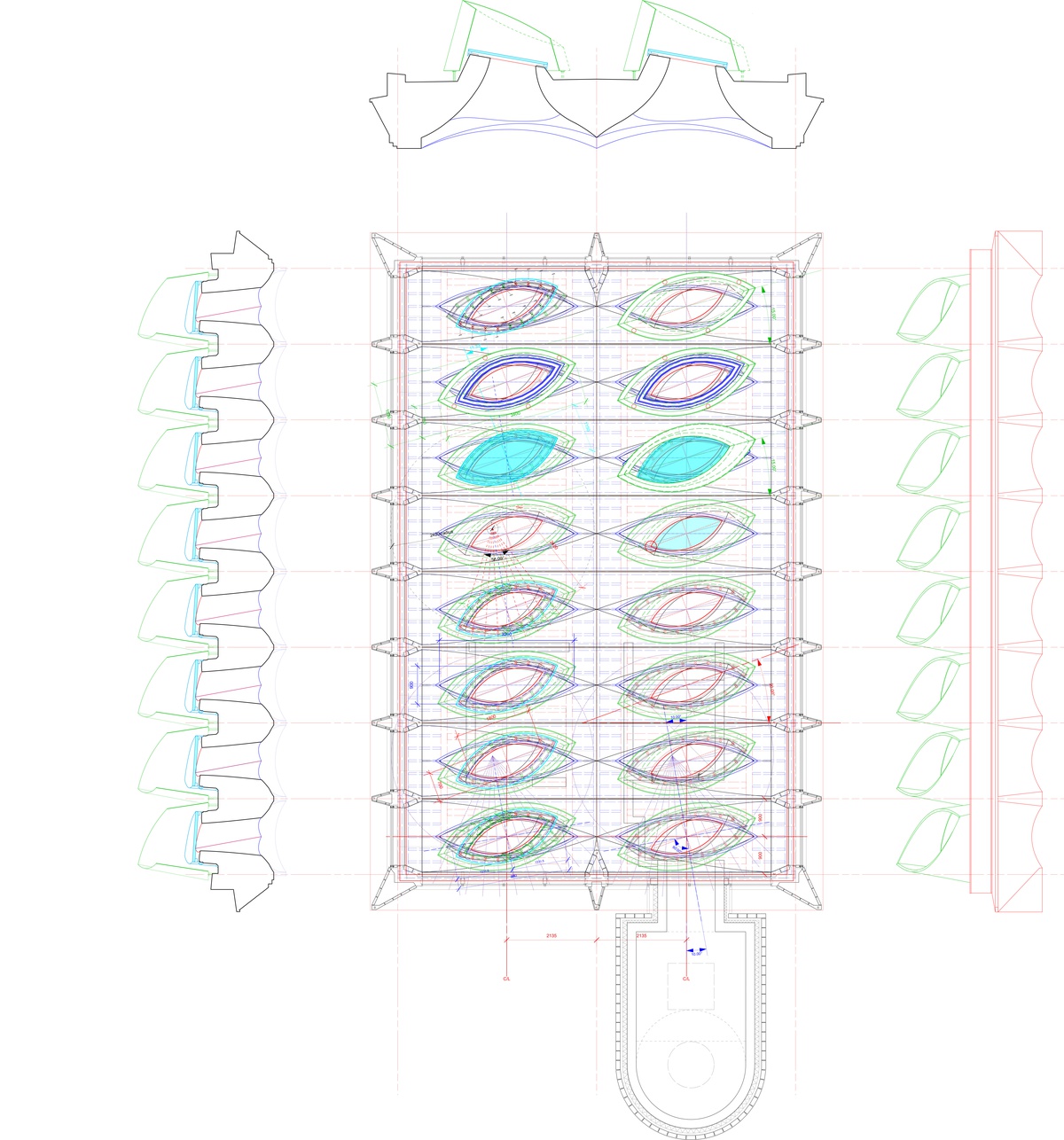ARCHITECTURE AS AN INSTRUCTION-BASED ART – HARVARD UNIVERSITY EXHIBITION
SEPTEMBER 2024

An exhibition has opened at the Druker Design Gallery at Harvard University titled ‘Architecture as an Instruction-Based Art’. The exhibition is a selection of drawings which are used to coordinate the process of construction, that is, drawings which reflect the nature of architecture as an “instruction-based” art. We selected a drawing from our International Rugby Experience project in Ireland that shows the complex co-ordination and layering of construction from ceiling to roof level. Here each bay of the sculptural ceiling transitions upwards from an expansive oculus aligned with the building axes, twisting through 20 degrees to accommodate eye-shaped north-facing skylights and bespoke solar shades at roof level.
The exhibition has been curated by the Farshid Moussavi and runs until the 15th October. More information can be found on the Harvard website here.
CAMBRIDGE ARCHITECTURAL RESEARCH - WHY DO WE NEED LIBRARIES?
SEPTEMBER 2024

Associate Tim Allen-Booth gave a talk on the New College Library at Magdalene College Cambridge as part of an event on the future of libraries organised by Cambridge Architectural Research as part of their Showroom series. CAR helped Magdalene to write the brief for the new library and it was fascinating to hear the story of its development. An enjoyable evening of discussion concluded with a dusk tour of the library kindly facilitated by the College.
STORIES OF EARTH: ECHOES IN ARCHITECTURE
AUGUST 2024

On the 14th September Níall will be speaking at Stories of Earth: Echoes in Architecture at the University of Technology in Sydney. Níall's talk is titled About Time.
'A place is somewhere we return to. This is what sets it apart from the continuous flow of topography. Our connection to a place is renewed with each visit. Therefore, it has a special connection with time. We might say that the concept of place has as much to do with time as with area. Archaeologists researching the earliest permanent houses look for a telltale sign: one hearth built above another as an act of conscious representation. It tells us that some little band, family, or community saw their bonds lasting over a longer duration. This was something that could be given material presence. The first houses gave us a history. They encouraged us to believe that we could jointly invest in more ambitious activities whose returns were not immediately available. This expanded horizon transformed human culture. It also gave us our present conception of architecture, which is, above all, a representation of temporal depth. Níall will speak about architecture as a material embodiment of time.'
Níall will be joined by Rick Joy, Marina Tabassum Marusa Zorec and Peter Stuchbury.
The event page can be accessed here.


